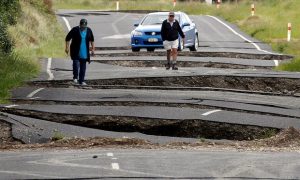Global catastrophe risk modelling firm RMS has released its updated version 17.0 RMS North America Earthquake Models, which provides a more accurate and comprehensive view of earthquake risks across the U.S., Canada, and Mexico.
 RMS describes the release as a “major step forward in managing earthquake risk,” claiming that its new version 17.0 North America Earthquake Models offer the “highest quality implementation of earthquake science and data available in the (re)insurance industry.”
RMS describes the release as a “major step forward in managing earthquake risk,” claiming that its new version 17.0 North America Earthquake Models offer the “highest quality implementation of earthquake science and data available in the (re)insurance industry.”
One of the key additions to the new and updated model concerns the inclusion of induced seismic activity, meaning clients can obtain a view of property risks from man-made earthquakes across Oklahoma, Kansas, Ohio, Arkansas, Texas, Colorado, New Mexico and Alabama. This feature will also enable users of the new models to assess risks from earthquakes tied to oil and gas extraction.
Mohsen Rahnama, Chief Risk Modelling Officer, RMS, commented on the release; “The quality of the updated model is extraordinary and we overcame significant technical and computational challenges to deliver one which is suitable for not only portfolio management and risk transfer, but individual, more granular risk selection – all on a consistent and coherent basis.
“The model affords clients the rigorous insights needed to use capacity more efficiently, and successfully compete in today’s market environment.”
With the new U.S. earthquake models RMS explains that the reference point is the U.S. Geological Survey (USGS) 2014 national seismic hazard model. RMS collaborated with the USGS and its implementation means the modelled average annual loss (AAL) and return period hazard within the RMS model is in line with predictions of the full USGS event set.
For Canadian earthquake risks, the new and improved model utilises an updated historical earthquake catalog that spans almost 400 years, and also includes all ten provinces as well as the three Canadian territories. Furthermore, the RMS Canada Earthquake Model incorporates a new Vancouver Basin Model, and also a new suite of tsunami accumulation footprints for the west coast, a feature also available for the west coast of the U.S.
The RMS Mexico Earthquake Model now includes an updated, time-dependent view of the Mexico Subduction Zone, and also offers increased definition of regional vulnerability in design and building practices, says RMS.
“The updated model will enable RMS clients to manage their risk accumulations with more confidence and underwrite a better book of business,” says RMS.


